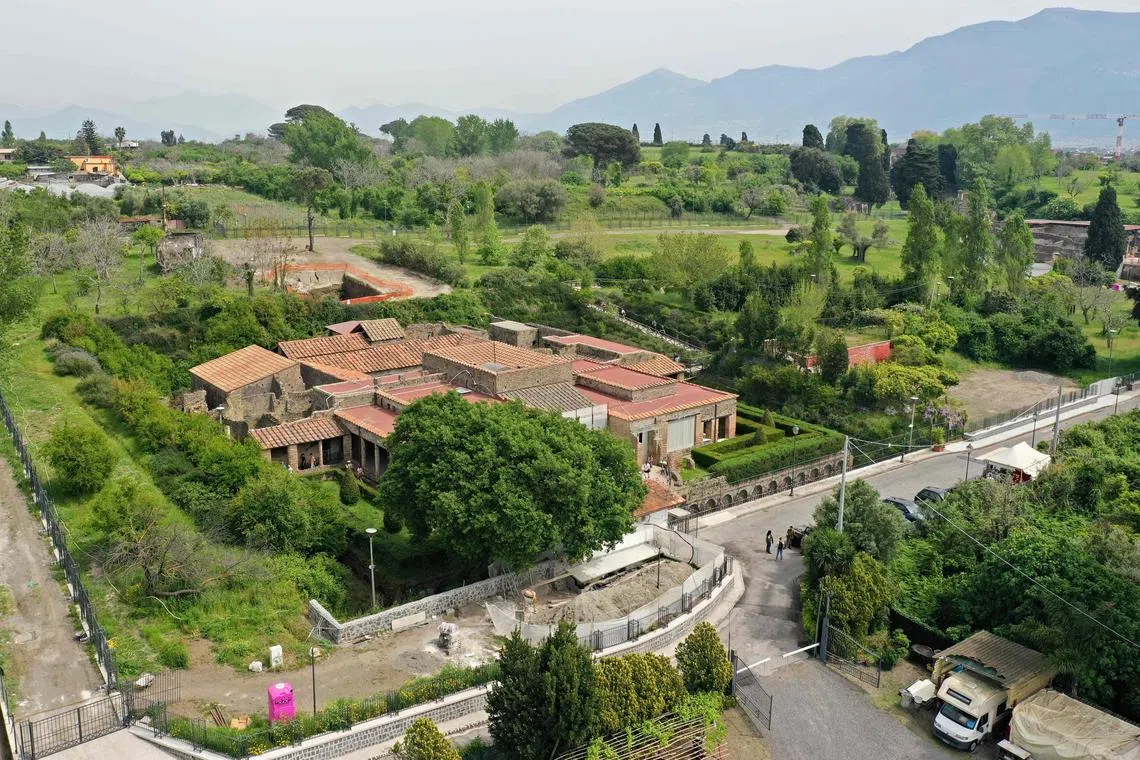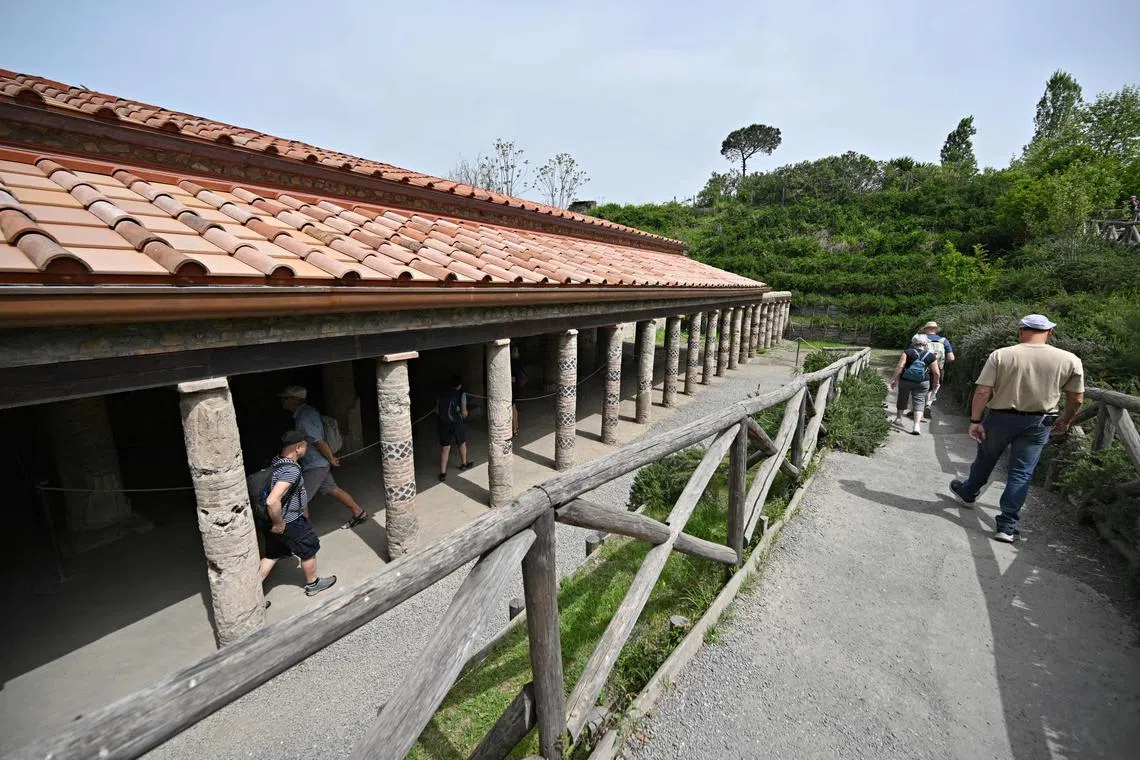‘Ancient Roman’ solar roof tiles power Pompeii villa
Sign up now: Get ST's newsletters delivered to your inbox

An aerial view shows Pompeii's Villa of the Mysteries, which has been partly retiled with solar panels, in April.
PHOTO: AFP
Follow topic:
POMPEII, Italy – Pompeii is shining a light on mysterious rites of ancient Rome, thanks to terracotta-style solar roof tiles installed on one of its most famous villas.
The traditional-looking tiles have solar photovoltaic cells inside, allowing the Unesco World Heritage Site to preserve its aesthetics while generating clean energy to illuminate its frescoes.
And though the project is in its early stages, experts say the tiles could one day help historic city centres across Italy turn green.
The tiles look “exactly the same as the ancient (Roman) ones”, found in archaeological sites and cities across the Mediterranean, said Pompeii director Gabriel Zuchtriegel.
But while “Pompeii is a unique site due to its vast size and complexity... I hope this will not be a unique project”, said Mr Zuchtriegel, who wants the site near Naples to be a real-life laboratory for sustainability.
The scheme weds emerging technologies with an extraordinary mural unearthed in 1909 under deep layers of volcanic ash at the Villa of the Mysteries, which was buried along with the rest of the city when Vesuvius erupted nearly 2,000 years ago.
The mural depicts female devotees of Dionysus – the god of wine and revelry – engaged in mysterious rites.

The traditional-looking tiles have solar photovoltaic cells inside, allowing the Unesco World Heritage Site to preserve its aesthetics while generating clean energy to illuminate its frescoes.
PHOTO: AFP
They have intrigued scholars for decades, with some historians suggesting they are evidence that the lady of the villa was a priestess whose slaves took part in cult rituals.
The fresco, which covers three walls and is one of the best preserved in Pompeii, is illuminated by special LED lights designed to bring the deep red, purple and gold images to life, while not damaging the painted surfaces.
The lights are powered by electricity generated by the solar panels, which were installed in October.

Tourists visit the Hall of Mysteries in the Villa of the Mysteries, lit by green energy.
PHOTO: AFP
Ahlux, the Italian company behind the lights, patented the system in 2022 and produces both curved and flat panels varnished in terracotta tones.
The solar panels on the villa’s roof are flat and lie between traditional ceramic curved tiles.
They cover 70 sq m of roof, produce a maximum of 13 kilowatt-hours and are linked to an ecologically-friendly sodium battery, according to project manager Alberto Bruni.
Pompeii, which gets more than 15 hours of sunlight a day in peak summer, intends to extend their use to other villas in the archaeological site, he said.

The solar panels on the villa’s roof are flat and lie between traditional ceramic curved tiles.
PHOTO: AFP
Mr Augusto Grillo, founder of Ahlux, said the tiles are about 5 per cent less efficient than a traditional solar panel.
“This nominal loss is compensated, however, by the fact that our panels heat up less in summer”, while traditional ones are covered by glass, and can lose efficiency on very hot days, he said.
“The performance ends up being very similar,” he said.
Various institutions have expressed interest in the tiles, from Rome’s Maxxi modern art museum to the 17th-century Pinacoteca Ambrosiana museum in Milan, Mr Grillo said.
“The problem is finding the funds,” he said, adding that many of Italy’s famous historic buildings are public or owned by Catholic institutions.
The cost is a bit more than the price of a new roof and traditional panels put together – though the solar tiles, which last between 20 to 25 years, serve double duty because they function as a roof too, Mr Grillo said.
Mr Bruni said the cost of the panels “is coming down”, meaning they may be able to play a part in the wider ecological transition.
Italy is under pressure to make red-roofed cities such as Florence or Bologna greener as part of efforts to combat climate change.
The European Union aims to reduce carbon emissions by 55 per cent compared with 1990 levels by 2030, and will have to upgrade existing buildings to do so.
That is a mammoth challenge for Italy, where some 60 per cent of buildings are in the worst two energy categories, compared with 17 per cent in France and 6 per cent in Germany, according to Italian Contractors’ Association ANCE. AFP

